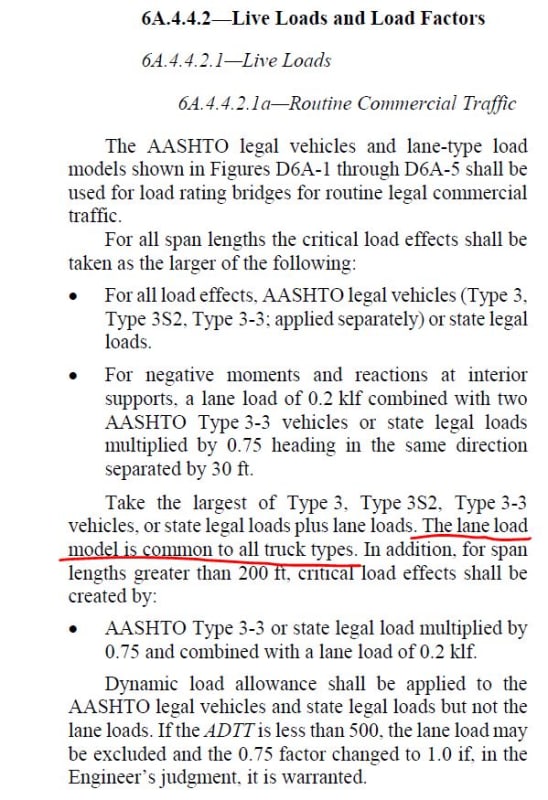OSUCivlEng
Civil/Environmental
I am performing an AASHTO LRFR legal load rating (Type 3, Type 3S2, 3-3, etc.) for a single span bridge less than 200 feet in length. Should I include the lane load (0.64 klf) with the legal truck? In my opinion the wording in the MBE isn't clear if the lane load should be included or not.

